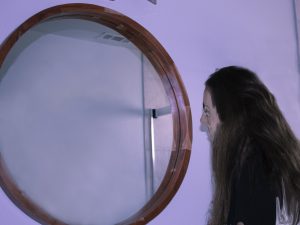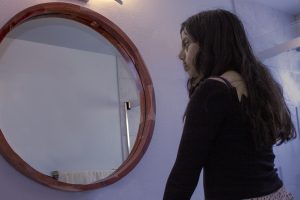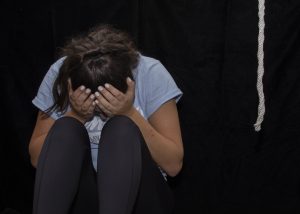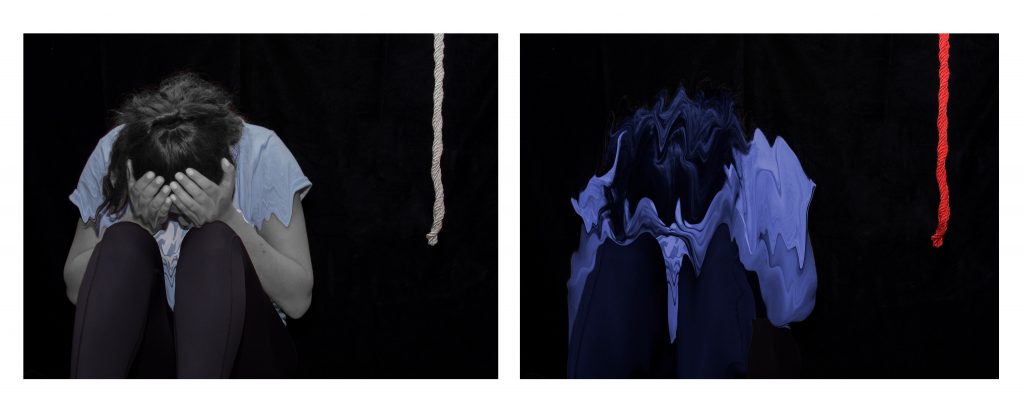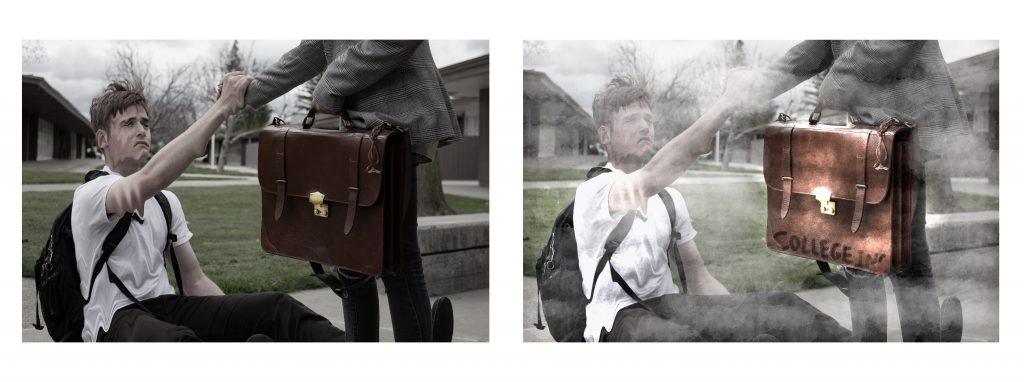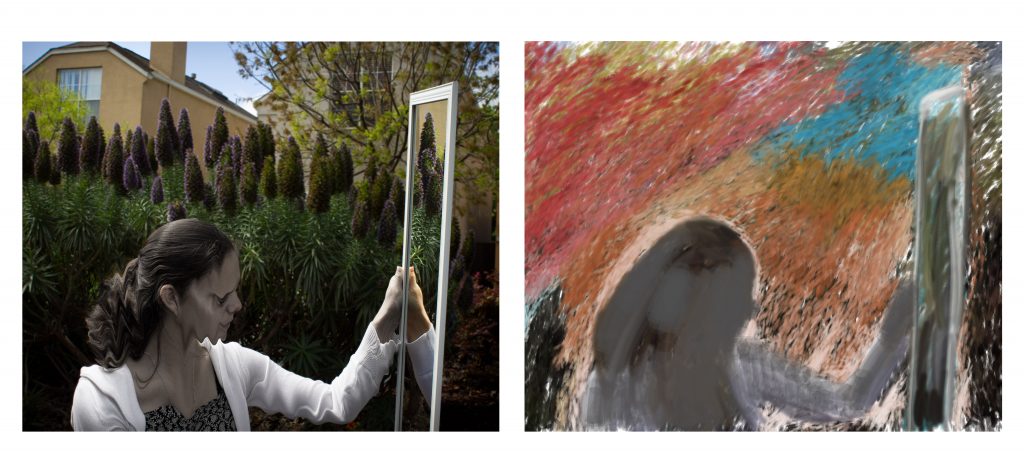Introduction
Zenith is a synthesis of all 0f our skills learned at Freestyle Academy composed into a project of our choice. For my Zenith Project uses photography and digital art to depict the obstacles college student’s face in regards to today’s mental health practices, as well as a depiction of the three most common mental illnesses. My editing process was inspired by surrealism photography. My three concepts are based on my research paper. The first one represents the stigmatization and fear of medicine for mental health illnesses, the second one represents the lack of support that colleges give their students during mental health rough patches, and the last one represents the way we handle mental illnesses, how most people feel as though we can only get help when the illness gets to or near a crisis stage. My last piece is a triptych that embodies the feelings of anxiety, depression, and bipolar disorder through a workplace setting. For my project, I used Photoshop and Corel Painter.
This project was a risk for me because I never have used Corel Painter before, tried surrealism, or used Photoshop in a more creative way (not just editing a photo, but changing it drastically). Corel Painter was extremely hard for me to use, so I only ended up doing my first diptych with Corel Painter.
To read my artist statement, read the pdf below:
Process:
Final:
Reflection:
After long thought, I decided that my Zenith project would be focused on photography and mental health, two things I am passionate about. Photography is one of my favorite mediums to work with, and mental health is something I will only continue to talk about as I start my higher education as a psychology major. My idea only clicked a week before our Zenith pitches were due. I was unsure about what I would do up until then. I knew I wanted to do photography and something meaningful. After re-reading my research paper about college mental health, I decided to see if I could artistically get the same messages across. I think this project expresses my curiosity and interest in psychology well, as the entire project is based on it.
In the past, I have only used Photoshop as a tool to edit photos to make them look “prettier”. For my Zenith project, I challenged myself to make surreal pictures and drastic edits using Photoshop. I also tried to use Corel Painter to challenge myself in a completely new application. I was originally planning to make four diptychs and quadriptych, but due to time restrictions, I shortened my project to three diptychs and one triptych. Each diptych represented one of the three main problems college students’ mental health faces. The first problem represents the stigmatization of medication for mental health. The second problem is the lack of support colleges choose to give students during this time, such as forcing students to go on mandatory leaves rather than jeopardizing their reputation and liability. The third problem is the way we treat mental illnesses, through “crisis-management” and end-game procedures instead of preventative methods. Most people only seek help with their problem The triptych represented the 3 most common mental illnesses, anxiety, depression, and bipolar disorder through an office space.
For my first diptych about the stigmatization of medication for mental illnesses, I used Photoshop on the left and Corel Painter on the right. This is the only diptych I decided to use Corel Painter with because it took over two weeks to complete. Because my use of Corel Painter was abstract, it was hard and frustrating to use this program because there are too many tools to use. I also had to reshoot my photographs for my first diptych three times, which was a major setback. After looking at the end product for the first diptych, I decided that I liked surrealism better and ditched Corel Painter all-together.
Throughout this project, I constantly needed feedback and subjects for my photos. Thanks to the whole PM Design II class, I was able to finish my project mostly to my expectations. I think the feedback and critique process throughout my project was extremely beneficial. I especially got help during the “College First” diptych and the triptych when coming up with ways on how to edit the photographs. I think collaboration in Design II worked out well because our whole class was eager to help each other out. Someone was always available for feedback or help.
As mentioned above, my project only met most of my expectations because there were a few things that I wish I could change and weren’t well executed. I wanted to get a more interesting picture for the middle photo in the triptych and would have planned more about what I was going to do in Corel Painter. If I did this, my project would meet more of my rubric as well as my expectations.
The 21st Century Skills I improved the most on was teamwork and collaboration, digital literacy, and social responsibility. Throughout the project and the Zenith unit, everyone collaborated and I got a lot help thinking through my ideas. As for digital literacy, I learned how to use the Liquify tool, make better selections, and explored a lot more in Photoshop. I even learned a little bit about brushes and layering in Corel Painter. Lastly, I think my project (coupled with my research paper) exemplifies social responsibility because my topic addresses mental health and the way we deal with it. I think I least improved on leadership because I never had to do anything that required leadership. I never had to guide a group or direct someone other than myself.
In the future, I will plan out my projects more, to the detail. While my project was very planned out, I think a little more structure and a better vision would have helped me have a more complete project.
I hope my Zenith spreads awareness about what needs to change in our mental health system in America. I hope people know that it’s never too late, or too early, to reach out for help. And I hope that colleges, and society as a whole, start to take more preventative measures towards ensuring good mental health.
